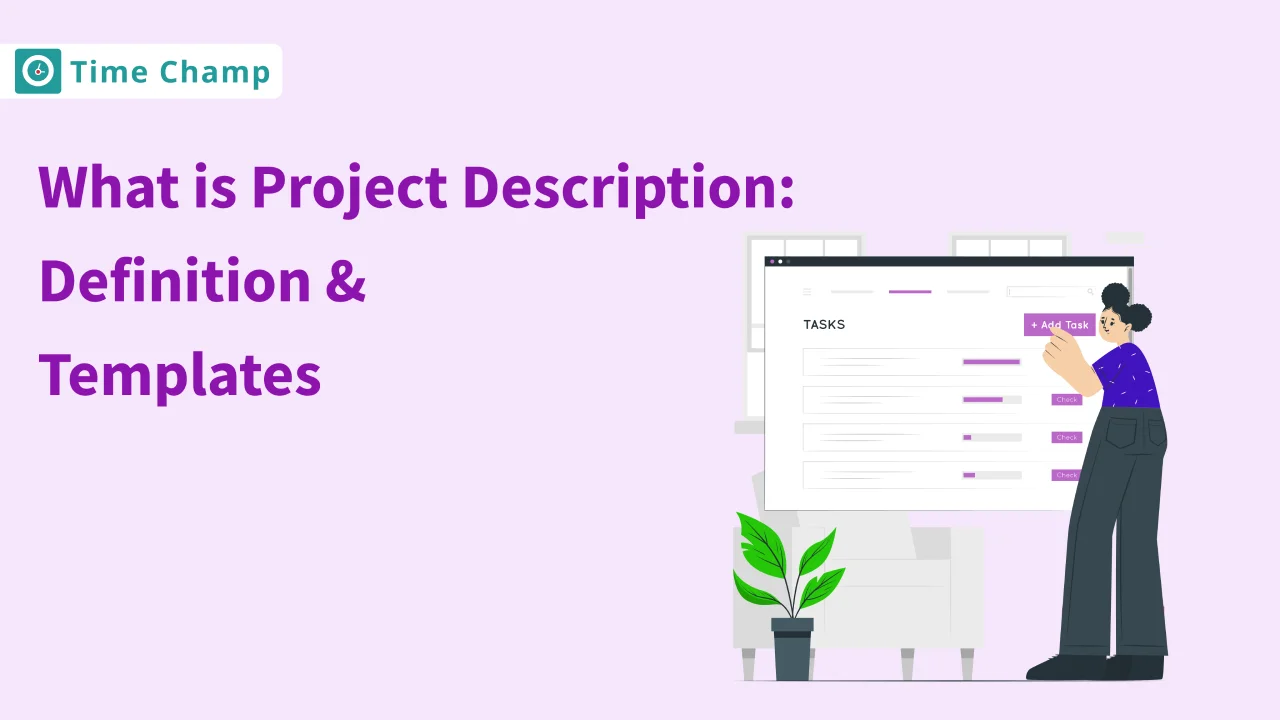A project description is a detailed directive that is aimed at the purpose, objectives and scope of a project. It includes the main components such as objectives, outcomes, stakeholders, schedule and resource prerequisites. Imagine it as a compass that gives a clear and straightforward route for all the parties. This approach guarantees that everyone is in the same loop regarding the objectives, the deadlines and the resources, which are the basis for successful planning and implementation.
Let’s discuss in detail how you can create a captivating project description for various reasons. Keep on reading to find a free template that can help you in the making of a project summary for your different purposes.
What is the Purpose of Project Description?
A project description mainly focuses on what the project aims to accomplish, why it is important, and how it will be implemented. Think of it as a map that is a guide for all the project participants to reach the end of the road jointly.
The project description provides the objectives, sets expectations, directs planning, brings stakeholders in line, and facilitates communication. It guarantees that all team members understand what needs to be done, why, and how, which significantly increases the chances of success of the project.
Also Read: Features of Project Management Software
What Should I Include in a Project Description?
While creating a project description, it is important to make sure that all the important details are covered so that there is no confusion among everyone involved. You should consider including these key elements in your project brief.
- Project Overview: Firstly, give a short overview of the project with a mention of the purpose and goals. This is to enable the audience to have a general idea of the project.
- Scope and Outcomes: Set up the range of the project, with what is included and what isn’t spelt out. Specify what the project will produce as a result and what the main outcomes will be.
- Stakeholders: First of all, list down all the stakeholders who are involved in the project, such as the team members, clients, sponsors, and any other relevant parties. This is a good way to bring to the front, those who are affected by the project and those who need to be kept informed.
- Timeline: Add a timeline or schedule for the project, which should show all the project milestones, deadlines and the entire project period. This way, it is easier to keep to the deadlines and adjust the plan if necessary.
- Resources: Spell out the resources required to finish the project, which are budget, personnel, equipment, and materials. This will avoid false information and make everyone aware of what is required to accomplish the project.
- Roles and Responsibilities: Set out very clearly the roles and responsibilities of all the team members who will work on the project. It does not only make sure that the roles are clearly defined but also that everyone on board is aware of what they are supposed to do.
- Risks and Mitigation Strategies: Determine the possible risks and threats that may emerge in the process and create an action plan for risk management. This will enable us to foresee problems and accordingly take precautionary measures.
In the description of the project, you should include these main points to offer a brief summary that will help you achieve the desired project outcome.
How to Create an Effective Project Description?

Follow these easy steps to write an effective project description.
- Summarize: Begin your project summary with a clear overview of its goals and give a quick presentation about the project’s aim, objectives, and the project’s scope. By doing this you can give everyone a clear idea of what the project will be about.
- Define: Establish the objectives and purpose of the project. What kind of problem are you trying to solve here or what do you want to achieve? Give a particular and clear description of the accomplishment of the project.
- Justify: Make sure you tell everyone the actual purpose of the project. What is the necessity? and how is it relevant? What benefits will it provide? Explain why is it so much important and lastly why people should take it seriously.
- Evaluate: Analyze the suitability and sustainability of the project. Think of resources, budget, as well as potential risks. Evaluate possible effects and challenges that may occur during the implementation of the project.
- Explain the Approach: Highlight the strategy or technique that will be followed in order to accomplish the project. What scheme will be employed to achieve the project’s aims? Leaders should know how the project will be implemented. What steps and phases are going to be involved in the process?
- Estimate the Timeline: Give an overview of the project’s schedule. Split it into steps or milestones and allot deadlines for each step. Taking into account resource availability and interdependence between the tasks is crucial.
Also Read: https://www.timechamp.io/blogs/how-to-set-and-utilize-smart-goals-for-project-management/
Want to manage your projects with ease?
Effortlessly assign and manage your projects with Time Champ
Signup for FreeBook DemoBest Practices for Crafting Project Description
Composing a project description is like designing a map for your project. This will help you and your team to know what needs to be done, why it is important and how to achieve your goals. Here are some tips to ensure your project details are clear and effective.
- Start with a Clear Purpose: Specify and explain the purpose and objectives of the project. What are the issues that you want to deal with, or what objective do you want to achieve? This is the point where everything else begins.
- Define the Scope: Always stay clear about the project scope and what is not included in it. With the help of this, there will not be any confusion and people will limit their expectations.
Identify Key Stakeholders: Think prior about who will be affected by or what will be involved in the project. Such stakeholders comprise the team members, clients, sponsors, and any other parties that may be relevant. Making sure they’re happy and satisfied is really important. - Specify Outputs: State what the actual outcomes or products of the project will be. This could be anything from reports, prototypes, and software, to any other final deliverables.
- Create a Timeline: Make a detailed schedule or timeline for your project. Split that timetable into phases or milestones, and set deadlines for each part.
- Allocate Resources: Discover what resources you will need to finish the project successfully. It incorporates the budget, the number of people, the equipment, and the materials. Make sure you have all the necessary tools at your disposal to guarantee that the project runs smoothly.
- Communicate Roles and Responsibilities: Define the roles and responsibilities of each team member accurately. This way everyone is on the same page and they all know what is expected from them.
- Anticipate Risks: Identify all the possible risks or challenges that the project may encounter. Develop strategies for risk management to minimise the effects of the risks on the project.
Project Description Sample Template

Final Thoughts
In conclusion, a precise project description is the main thing that leads to success. It specifies what needs to be done, why it is important and how to achieve all this. Through their observance, you will have everybody on the same page and ready to work together to reach the project’s goals. Make proper use of the templates provided to simplify the process and support transparent communication.
FAQs
It is a summary that helps the reader to understand the goal, objective, study area and methodology of the project.
You have to make it clear about the project objectives, scope, outcomes, timeline, resources, and any other information that you think is important.
The project summary gives a clear image, brings the stakeholders on the same page, helps planning and makes sure that everyone knows the project aims and objectives.
Obviously, you can do this by including a brief project summary in your resume that would cover all the skills, experience, and achievements you have.
Don’t make it too technical nor bring in unrelated data. Keep it short and make sure you touch upon the major points.







